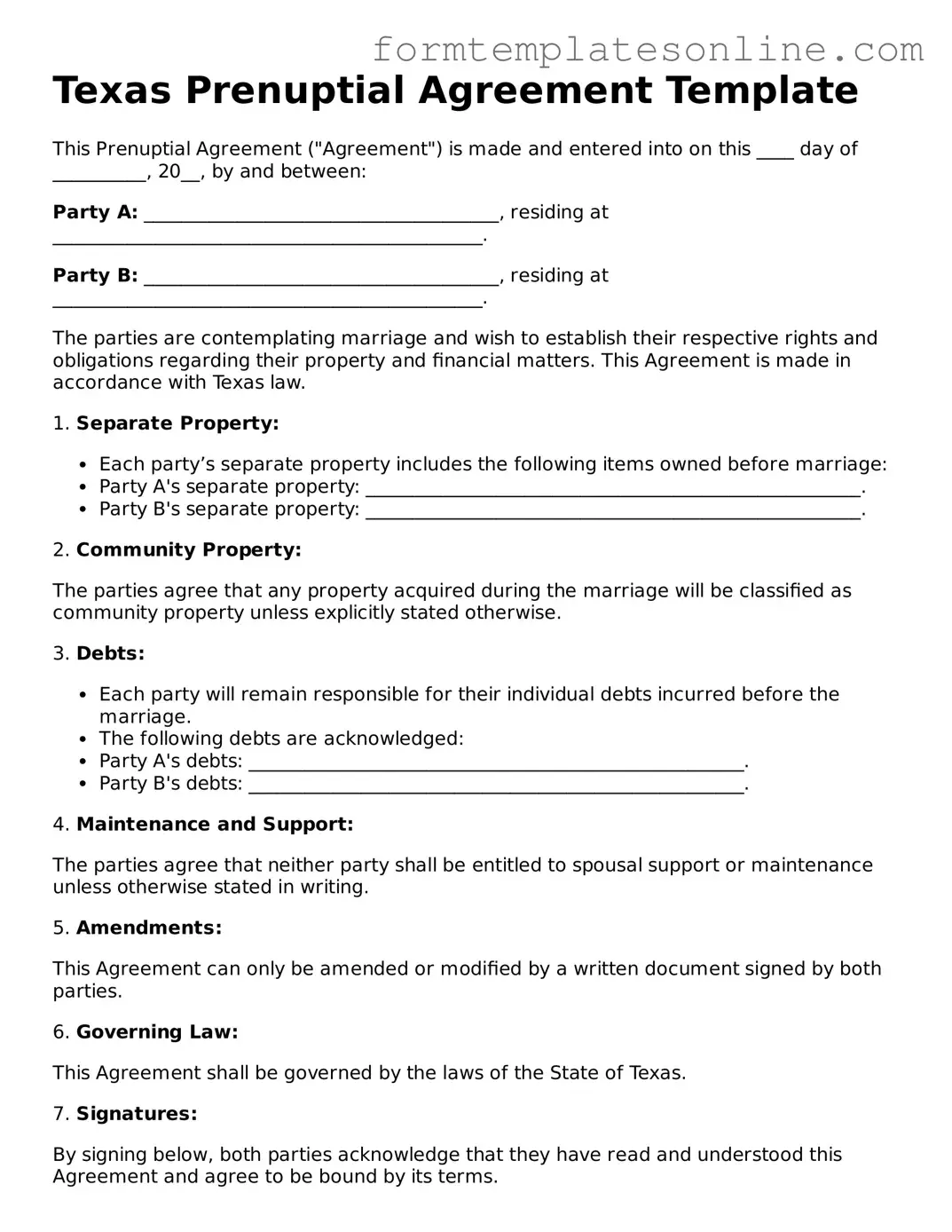Texas Prenuptial Agreement Template
This Prenuptial Agreement ("Agreement") is made and entered into on this ____ day of __________, 20__, by and between:
Party A: ______________________________________, residing at ______________________________________________.
Party B: ______________________________________, residing at ______________________________________________.
The parties are contemplating marriage and wish to establish their respective rights and obligations regarding their property and financial matters. This Agreement is made in accordance with Texas law.
1. Separate Property:
- Each party’s separate property includes the following items owned before marriage:
- Party A's separate property: _____________________________________________________.
- Party B's separate property: _____________________________________________________.
2. Community Property:
The parties agree that any property acquired during the marriage will be classified as community property unless explicitly stated otherwise.
3. Debts:
- Each party will remain responsible for their individual debts incurred before the marriage.
- The following debts are acknowledged:
- Party A's debts: _____________________________________________________.
- Party B's debts: _____________________________________________________.
4. Maintenance and Support:
The parties agree that neither party shall be entitled to spousal support or maintenance unless otherwise stated in writing.
5. Amendments:
This Agreement can only be amended or modified by a written document signed by both parties.
6. Governing Law:
This Agreement shall be governed by the laws of the State of Texas.
7. Signatures:
By signing below, both parties acknowledge that they have read and understood this Agreement and agree to be bound by its terms.
______________________________
Party A Signature
Date: __________________
______________________________
Party B Signature
Date: __________________
______________________________
Witness Signature
Date: __________________
